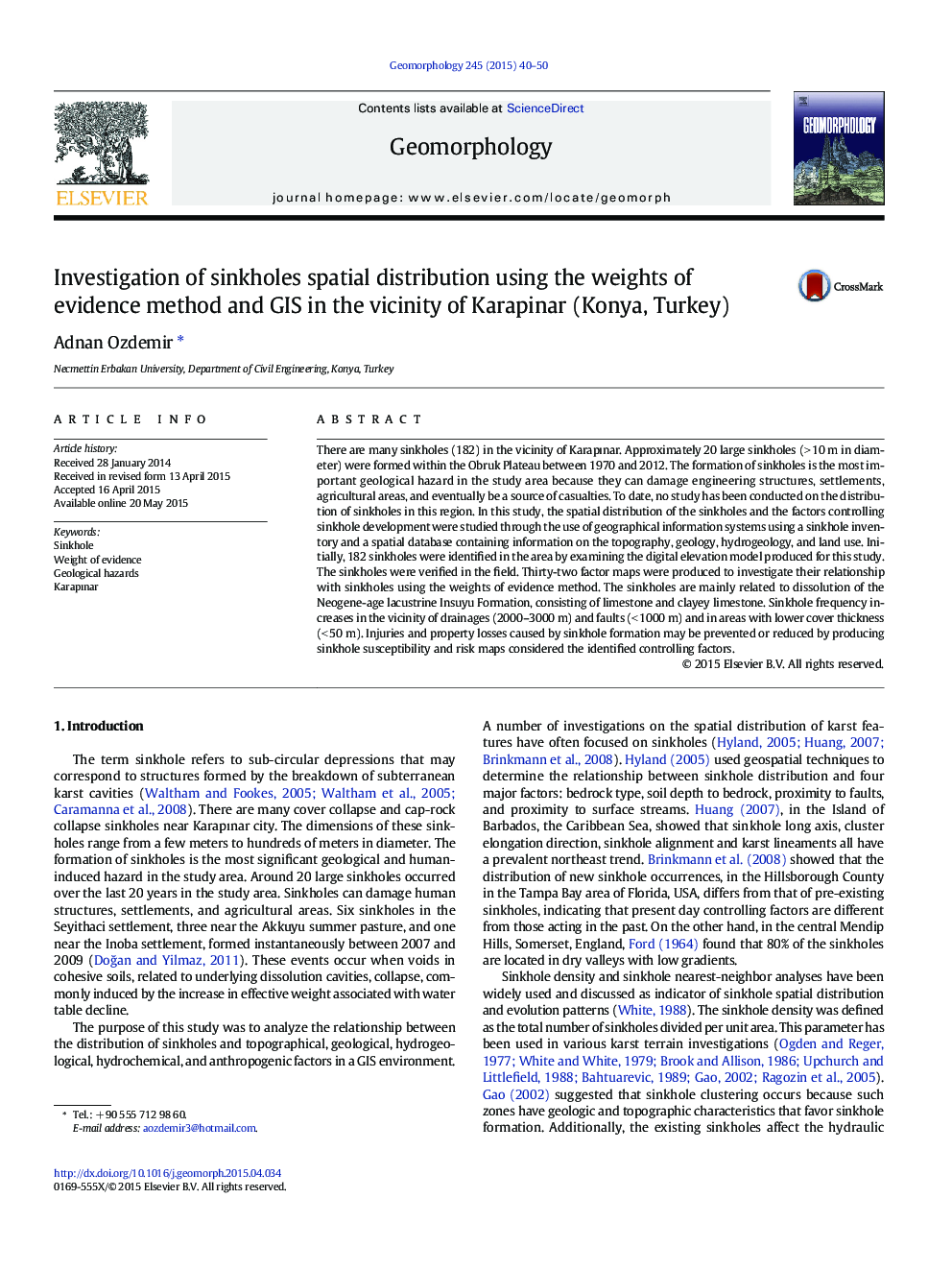| کد مقاله | کد نشریه | سال انتشار | مقاله انگلیسی | نسخه تمام متن |
|---|---|---|---|---|
| 4684157 | 1635404 | 2015 | 11 صفحه PDF | دانلود رایگان |

• In this study, 32 factors affecting sinkhole formation were identified in the Karapınar (Turkey) Region.
• Agricultural irrigation has accelerated the formation of sinkholes.
• Seasonal declines of groundwater levels increase sinkhole occurrence in sinkhole-prone regions.
• Sinkhole formation increases as drainage lines and faults become closer to each other.
• Sinkhole formation increases as the cover thickness decreases.
There are many sinkholes (182) in the vicinity of Karapınar. Approximately 20 large sinkholes (> 10 m in diameter) were formed within the Obruk Plateau between 1970 and 2012. The formation of sinkholes is the most important geological hazard in the study area because they can damage engineering structures, settlements, agricultural areas, and eventually be a source of casualties. To date, no study has been conducted on the distribution of sinkholes in this region. In this study, the spatial distribution of the sinkholes and the factors controlling sinkhole development were studied through the use of geographical information systems using a sinkhole inventory and a spatial database containing information on the topography, geology, hydrogeology, and land use. Initially, 182 sinkholes were identified in the area by examining the digital elevation model produced for this study. The sinkholes were verified in the field. Thirty-two factor maps were produced to investigate their relationship with sinkholes using the weights of evidence method. The sinkholes are mainly related to dissolution of the Neogene-age lacustrine Insuyu Formation, consisting of limestone and clayey limestone. Sinkhole frequency increases in the vicinity of drainages (2000–3000 m) and faults (< 1000 m) and in areas with lower cover thickness (< 50 m). Injuries and property losses caused by sinkhole formation may be prevented or reduced by producing sinkhole susceptibility and risk maps considered the identified controlling factors.
Journal: Geomorphology - Volume 245, 15 September 2015, Pages 40–50